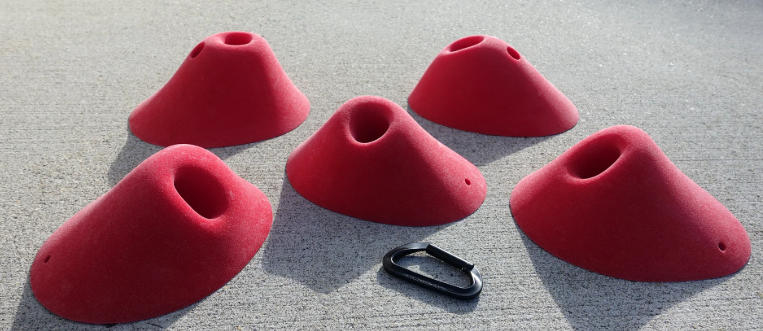Climbing holds play a crucial role in the world of climbing, determining not only the difficulty of routes but also the overall experience for climbers. Understanding the different types of climbing holds can enhance your skills and make you more versatile as a climber. Whether you are a beginner or a seasoned pro, getting to know these holds can help you improve your technique and build strength.
Types of Climbing Holds
When talking about climbing holds, it’s important to differentiate between the various types available. Each hold comes with a unique shape and texture, which impacts how it can be used. Common types include jugs, crimps, slopers, and pinches. Jugs are large, easy-to-grab holds that are perfect for beginners to build confidence. Crimps are smaller and require more finger strength and precision, while slopers are smooth, requiring climbers to rely on body positioning and friction. Pinches, on the other hand, require you to squeeze to grip, making them great for developing hand strength. Knowing how to use these holds effectively can diversify your climbing techniques.
Improving Technique with Climbing Holds
Using climbing holds effectively involves more than just strength; technique plays a significant role in a climber’s success. A well-executed grip can greatly reduce fatigue and improve overall efficiency on the wall. For example, when climbing on a crimp, try to engage your thumb for better grip and support, rather than relying solely on your fingers. Additionally, utilizing proper footwork allows you to maintain balance and distribute weight effectively. Focus on keeping your hips close to the wall, as this positioning helps harness gravity to your advantage. By paying attention to your technique with different holds, you can enhance your performance and tackle more challenging climbs.
The Importance of Hold Selection
Choosing the right holds is essential for route setting and climbing strategy. As you plan your route, consider the sequence in which you’ll use the holds and how they connect. A well-set route will challenge you while also ensuring safety and maintainability. Climbing gyms often vary in the types of holds they use, which can mimic real-world climbing conditions. Experimenting with different holds in a safe environment allows you to fine-tune your skills and adapt to various terrains. Also, pay attention to the positioning of holds; a slightly different angle can change the dynamics of a climb. Understanding how to select and utilize holds effectively can significantly elevate your climbing experience.
In conclusion, learning about climbing holds is essential for anyone passionate about climbing. From recognizing different types of holds to honing your technique and selecting the appropriate grips, this knowledge can make your climbs more rewarding and enjoyable. Whether you’re just starting or looking to enhance your abilities, take the time to explore the world of climbing holds more deeply. Happy climbing!
